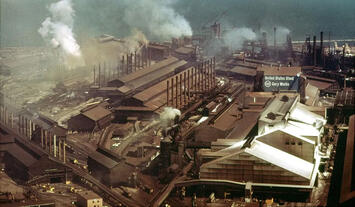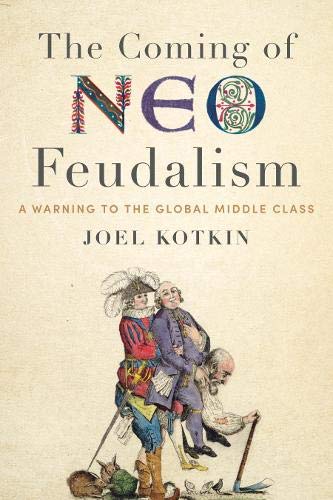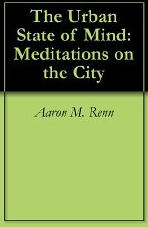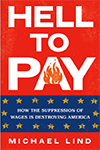
People talk today about creating a political movement around the “multi-racial working class.” But this class, and its politics, already exist. The political parties have just not yet found a way to connect with it.
The history of Northwest Indiana, my family’s southern migration from western Kentucky, and my own childhood on the fringe of the nation’s once murder capital, Gary, Indiana tells the story of the evolution of the multi-ethnic working-class, the issues they face, and what matters to them.
I grew up in Northwest Indiana in a small mill town called Lake Station, founded around 1850. It was at the terminus of the first train through Lake County, but the community failed because George Pullman decided to locate his sleeper train cars on Chicago’s South Side. The city was renamed East Gary in 1908, just two years after the founding of the City of Gary, where J.P. Morgan removed the dunes from Lake Michigan and built the world’s largest fully integrated steel mill. It was part of the world’s first billion-dollar company, U.S. Steel. East Gary was marketed as a suburb for steel executives, but the plan didn’t work, and the city failed again.
Over the next 15 years, Gary became a destination for 50+ different ethnicities, primarily uneducated men from Eastern and Central European poor countries. World War I prohibited the immigration of workers from European nations that were at war with the United States. During the Great Steel Strike of 1919, Inland Steel, located next door in East Chicago, recruited Mexicans to the area as strikebreakers. In Gary, the founder of the local chapter NAACP helped organize interracial solidarity during the strike.
Two years later, Congress passed the Emergency Quota Act, limiting immigration again. U.S. Steel then went on to aggressively recruit southern whites and blacks to fill the gap but also to stop unionization.
After 150 years as subsistence farmers in western Kentucky, my Papaw’s family moved to Gary where he gained employment in the Sheet & Tin Mill at U.S Steel in the late 50s. It was dirty and dangerous, but it was one of the few places where blacks and whites worked together. The local history is well covered in Ruth Needleman’s book Black Freedom Fighters in Steel. “People helped each other, and a guy would come up to you and ask for a dime or nickel, and if you had it, you’d give it to them, white or black.” As one family member recounts, Papaw did the same; he regularly invited black union colleagues to work on their cars and never charged them for even the parts, much less the labor.
After the 1959 steel strike, the longest in U.S. history, my Papaw, his wife, and two kids bought a house next door in the much more affordable and agrarian-feeling East Gary.
The community already had a significant Polish, Slovak, and Croatian contingent. Still, the migration of southern whites and some Mexicans to the area was so intense during the second wave in the late 1950s that the township had to build a new high school in an emergency. We are called the Ingots in honor of steelmaking, and our mascot is Joe Macarac, a Croatian steelworker hero of folklore.
As Gary began to decline from imports, automation, and white flight after the election of the nation’s first black mayor of a major city, East Gary returned to its original name, Lake Station, in 1977. There are claims this was driven by racism; however, as a historically heavily Democrat voting city, in 1984, the locals voted for Katie Hall in the three-way primary, the first black woman to represent Indiana in Congress.
After my Dad graduated from River Forest, he followed Papaw’s steps into Gary Sheet & Tin, but he was laid off during the mass consolidation of the industry in the 1980s. That decade shows Chicagoland and Gary losing more black population than anywhere in the nation, a story rarely written about.
A generation later, Mamaw and Papaw retired back to Crayne in Crittenden County, KY, and gave my Dad and uncle that little 864 sq. ft. home. I was raised in the same house, which sat on “the color line,” which included Mexicans and Puerto Ricans along with multi-ethnic and multi-racial folks. Interstate 65 separated and segregated us from the city of Gary, which by then had been coded for ‘black,’ which meant poor, and dangerous.
When I was a kid in the 1990s, Gary was the murder capital of the nation for multiple years running. In 1997, my Dad and I traveled to the Black Oak neighborhood, the city's original multiracial now only white-majority neighborhood, to help one of his Hungarian friends build a house. On our way over, I saw both prostitutes and drug dealers in broad daylight. This flew in the face of what I witnessed on TV, as all of my favorite athletes, musicians, and actors were black.
Perhaps it’s part of the crude steelworker language from earlier generations or a product of the time with ‘Parental Advisory’ labels on music albums, but we used ethnic and racial epithets toward each other with impunity at school. When you’re all part of the same social class, owning a particular stereotype is humorous because it is at least partially true. My peers were known by hyphenated ethnicities, from Mexi-rican to Polish-Mexican and a personal favorite, Czechoslovakian-Mexican or “Chex-Mex.” Others were so mixed that 23andMe DNA testing still can’t figure them out. Today, I couldn’t guess the ethnic or racial background of my peers’ kids.
Read the rest of this piece at: Aaron Renn.
Robert Ordway is a Republican policy analyst. He currently serves as Senior Policy Advisor to Indiana Governor Mike Braun. You can find him on Substack.
Photo: Gary Works Sheet & Tin Mill, courtesy the author.












